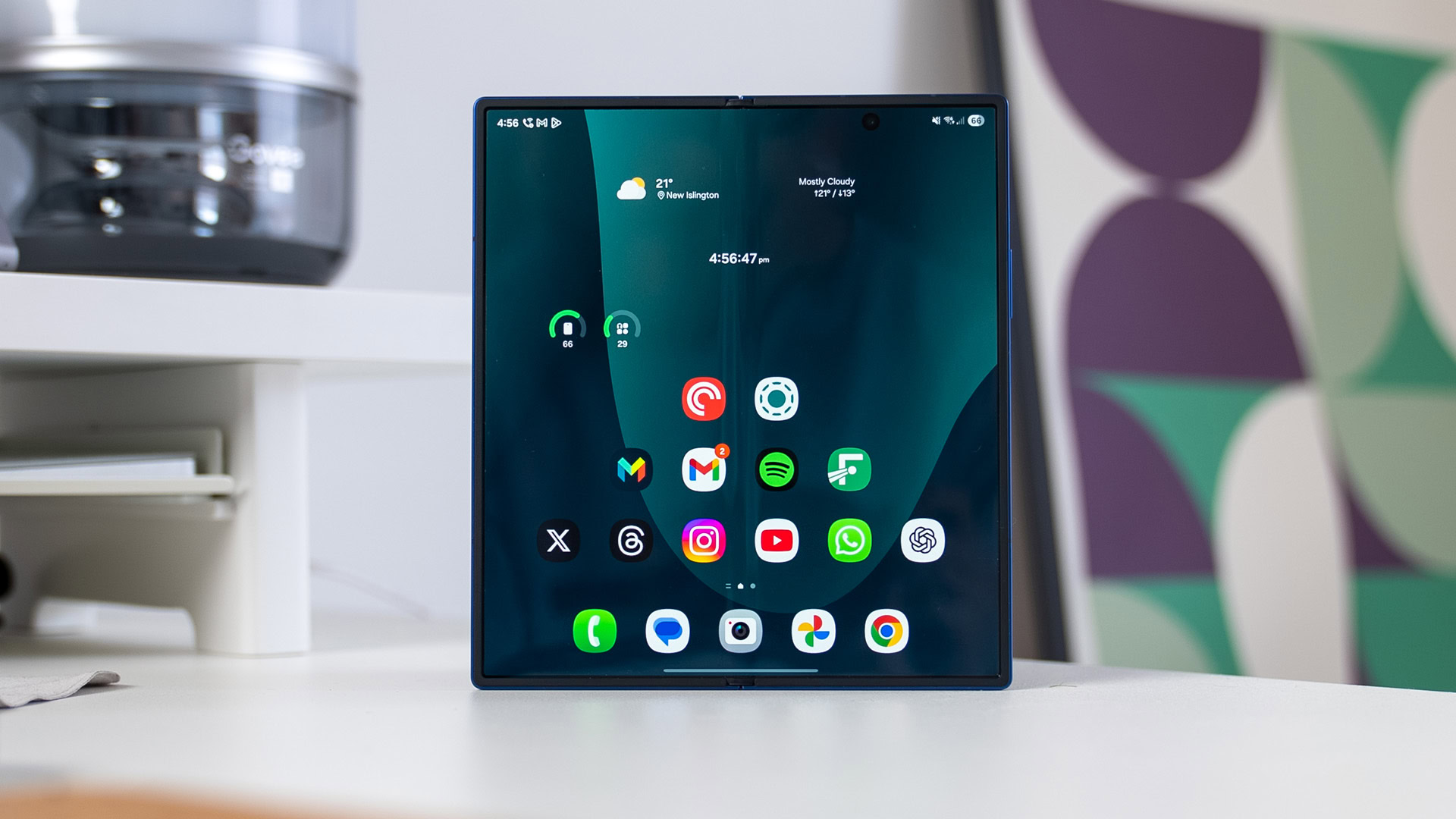When I played Donkey Kong Bananza for hours and hours over the last few weeks, I didn’t just play on my TV and the handheld screen. I spent a good chunk of my playtime wearing Viture’s latest display glasses, the Luma Pro, with which the lush levels never looked so eye-poppingly colorful. Viture’s glasses can be used for just about any USB-C-connected device, including phones, laptops or tablets, but they might be the best fit for games. Sadly, the Nintendo Switch 2 can’t directly connect to display on the glasses, but using Viture’s separately sold mobile dock as a conduit, I found the Switch’s games to be the best showcase for how rich these glasses’ brightness and color look.
The world of display-enabled glasses is growing fast. Like headphones for your eyes, this subcategory of tech includes players like Xreal, TCL and Viture. Xreal’s excellent One and One Pro glasses have improved audio as well as the ability to pin displays in place with built-in 3DoF (aka 3 Degrees of Freedom) head tracking.
Viture’s new Luma series of glasses, which includes four models coming between now and October, has some advantages and drawbacks over Xreal. I’ve only gotten to try the Viture Luma Pro model for now, since the others are coming later this year: a more bare-bones Luma, and the step-up Ultra and Beast glasses. After playing with the Luma Pros, I loved the quality of the display, enough to make me yearn for a high-quality OLED screen on my Switch 2.
A side view of the Luma Pro glasses, with magnetic prescription lenses attached which I needed.
The Luma Pro compares favorably to the Xreal One. Both cost $500 and use birdbath-style display systems, which use chunky angled lenses to project bright microOLED displays into your eyes. There are differences: the Luma Pro’s displays are brighter, at 1,000 nits (compared to 600 nits for Xreal One), and also higher-res (1,920×1,200 pixels per eye, as opposed to Xreal’s 1,920×1,080 per eye). The display definitely feels more color-saturated, likely due to the brightness bump. It makes the most difference for me when playing games, and the Switch 2’s color schemes are a perfect match.
Unfortunately, you need a special accessory to even connect a Switch 2 to these glasses, since Nintendo doesn’t enable direct glasses connections into its hardware the way you can do with Steam Deck and Windows handhelds. Viture sells a separate Pro Mobile Dock ($129) that doubles as a 6,500-mAh battery pack. You have to plug the Switch 2 into that dock, and then the glasses can plug into the dock too. The dock mimics a Switch 2 dock, which means you have to play the Switch with Joy-Cons detached. This is just as well since the Switch 2 ends up tethered to that chunky battery pack in the first place. That’s exactly what I did, and while the results were pleasant, the process was awkward.
Like previous Viture glasses, the Luma Pro has a diopter adjustment up to -4 for nearsightedness. (My prescription is worse, though.)
Luma’s advantages: Brightness, color and a bit of prescription adjustment
The extra brightness of Viture’s Luma Pro sometimes made darker movie scenes seem almost like they were in bright daylight. Watching scenes from David Cronenberg’s The Shrouds, indoor scenes almost felt like they were shot in different locations when I shifted from Luma Pro to Xreal One. It was too amped-up for my tastes, at least with Cronenberg.
For gaming, though, it’s particularly vivid. Sometimes it’s almost a bit too much for me, but you can lower the brightness and change the color tone to several presets to make it warmer or cooler.
The brightness still isn’t enough to overcome a super-bright, sunny summer day by the pool. I found daylight still competing with the electrically dimming sunglass-like lenses and the brightest setting, bleeding through.
The USB-C cable tether for these glasses uses a magnetic snap-on system. It’s easy to attach, but don’t lose that cable.
You need to tether these glasses to your laptop, phone, or whatever else you’re connecting to via USB-C, but Viture has a clever new magnetic cable system to snap onto the side of the glasses. This seems like a promising idea for future glasses that could run on battery power or be tethered on the fly, but for the moment, that magnetic cable doesn’t add a lot. It just means you have to make sure to pack another proprietary cable with you.
Finally, for some, these glasses could work even with some mild myopia. A diopter dial on each lens can be adjusted up to -4, saving you the need for prescription lens inserts. I’m a -8, so I needed lens inserts anyway. Viture’s solution magnetically snaps onto the glasses, which I appreciate, but it took a while to tweak the nose pieces (three are included, which also magnetically snap on) and arm angles, which click in place, to get my vision to look just right.
There’s also an included RGB camera right in the nosepiece, something Xreal is currently charging extra for on the Xreal One. I didn’t use the Xreal camera much, and right now, Viture isn’t doing much with its camera, either. You could use it to take photos and maybe help track movement with future software, but it feels vestigial now.
The Viture Luma Pro (left) next to Xreal One (right): Both have similar design and size, and angled “birdbath” style lenses that project microOLED displays to your eyes. Xreal’s have more onboard display settings, though.
Downside: No display pinning and not enough settings
You can’t pin the Luma Pro’s display in space like you can on the Xreal One unless you play with the software Viture makes to run on laptops. I miss the multiple display settings Xreal offers, including automatic transparency, screen size and distance controls, and even shifting screen placement.
The 52-degree field of view and slightly taller 16:10 aspect ratio display feel a tiny bit bigger than the Xreal One’s 50-degree viewing area, but having it stuck to my vision with no way to pin the display in place makes it hard to use as a laptop monitor. For gaming, it’s fine. The upcoming Viture Luma Beast glasses will have a 3DoF pinnable display function, plus a larger 58-degree viewing area for its display.
Wait for the Beast?
Coming in October is the step-up Luma Beast, a pair of glasses with even brighter, newer microOLED panels and a larger viewing area, plus the ability to pin a display in place. The Beast will also have flatter, less angled lenses, similar to the Xreal One Pro glasses. Yes, the price is a bit higher ($549), but I tested the Beast glasses briefly in June and came away impressed. I’d suggest you wait it out for those, or consider Xreal’s glasses. But if you value a rich, vivid and brighter display over anything else, these Viture Luma Pros might be your pick.











